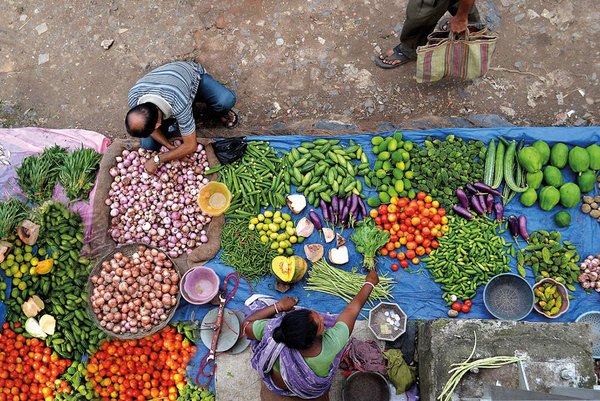 Download this article in magazine layout
Download this article in magazine layout
- Share this article
- Subscribe to our newsletter
The Agrobiodiversity Index
The importance of monitoring agrobiodiversity as a key food system characteristic is increasingly recognised by farmers and consumers as well as by decision-makers and programme managers, particularly in the context of increasing climate change. Against this backdrop, the Alliance of Bioversity International and the International Center for Tropical Agriculture (CIAT), together with multiple partners, developed the Agrobiodiversity Index. The Index is an innovative tool that, crossing disciplinary boundaries, brings together existing measures and data on breeding and seed systems, production systems, food markets and diets, analysing them under the lens of agricultural biodiversity for multiple goals.
Agricultural biodiversity, or agrobiodiversity, is a subset of biodiversity which includes the diversity of crops and their wild relatives, trees, animals, microbes and other species that contribute to agricultural production.
By accessing open data on food and agriculture, the tool allows biodiversity trends in food systems to be understood and monitored. In particular, it helps seed and food systems actors to measure agrobiodiversity in selected areas or value chains and understand to what extent their commitments and actions are contributing to the sustainable use and conservation of agrobiodiversity. Where data are available, the Agrobiodiversity Index equips food system actors with the data-based insights needed to make informed decisions to achieve sustainability and resilience. Where data are missing, the Index helps to flag these critical data gaps for planning.
Decision-makers can benefit from the Agrobiodiversity Index in different ways. First, it can help them identify risks in food and agriculture related to low agrobiodiversity. Second, they can use the information generated through the Index to plan interventions and formulate evidence-based policies and strategies that efficiently address today’s global challenges – including malnutrition, climate change and natural resource degradation. Despite its importance, the majority of the interactions between biodiversity, ecosystem services and the agricultural sector are invisible in established informational systems – including the quantities and respective prices of food and agricultural trade. Third, Agrobiodiversity Index results allow countries and programmes’ performance related to use and conservation of agrobiodiversity to be compared. This can foster knowledge exchange among programmes and countries, by identifying best practices to sustainably use and conserve agrobiodiversity.
The Agrobiodiversity Index has been used by, and tailored to, various organisations. Initially, most demand came from public sector partners. This led to a first series of country profiles which assessed existing levels of agrobiodiversity in markets and consumption for healthy diets, in production systems for sustainable agriculture, and in genetic resource management for future options. More recently, the private sector has become increasingly interested in leveraging agrobiodiversity for more sustainable solutions and considering related measures in their monitoring, assessments and decision-making. As examples, the food rating company HowGood has used the Index to incorporate agrobiodiversity layers in its sustainability assessment tool, and Wholechain to integrate agrobiodiversity metrics into its blockchain-based technology for traceability of supply chains. Multi-partner initiatives such as the Food Accelerator FACT have also adapted and adopted the Index to integrate agrobiodiversity principles and measures in their tools and activities.
Roseline Remans works as senior scientist with the Alliance of Bioversity International and CIAT, as part of the Multifunctional Landscapes research lever. She is based in Geneva, Switzerland.
Contact: r.remans@cgiar.org
* With contributions from Sarah Jones, Natalia Estrada, Ehsan Dulloo and Francesca Graziola, all Alliance of Bioversity and CIAT.
More info: www.agrobiodiversityindex.org





Add a comment
Be the First to Comment